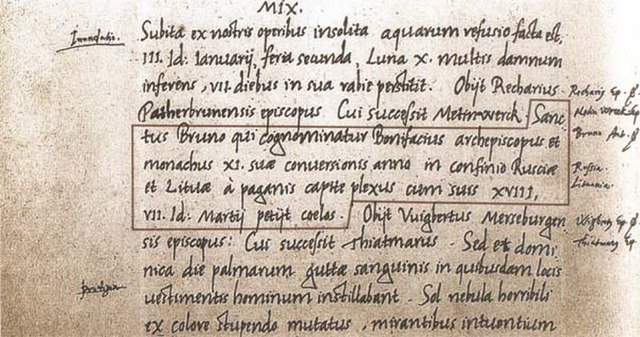The history of Lithuania dates back to settlements founded about 10,000 years ago, but the first written record of the name for the country dates back to 1009 AD. Lithuanians, one of the Baltic peoples, later conquered neighboring lands and established the Grand Duchy of Lithuania in the 13th century. The Grand Duchy was a successful and lasting warrior state. It remained fiercely independent and was one of the last areas of Europe to adopt Christianity. A formidable power, it became the largest state in Europe in the 15th century spread from the Baltic Sea to the Black Sea, through the conquest of large groups of East Slavs who resided in Ruthenia. In 1385, the Grand Duchy formed a dynastic union with Poland through the Union of Krewo. Later, the Union of Lublin (1569) created the Polish–Lithuanian Commonwealth. During the Second Northern War, the Grand Duchy sought protection under the Swedish Empire through the Union of Kėdainiai in 1655. However, it soon returned to being a part of the Polish–Lithuanian state, which persisted until 1795 when the last of the Partitions of Poland erased both independent Lithuania and Poland from the political map. After the dissolution, Lithuanians lived under the rule of the Russian Empire until the 20th century, although there were several major rebellions, especially in 1830–1831 and 1863.

Kernavė Mounds
Lithuania's name first written in 1009, in the annals of the Quedlinburg Abbey, Germany.
Pope Innocent IV's bull regarding Lithuania's placement under the jurisdiction of the Bishop of Rome, Mindaugas' baptism and coronation
Seal of Mindaugas
Christianization of Lithuania
The Christianization of Lithuania occurred in 1387, initiated by King of Poland and Grand Duke of Lithuania Jogaila and his cousin Vytautas the Great. It signified the official adoption of Catholic Christianity by Lithuania, the last pagan country in Europe. This event ended one of the most complicated and lengthiest processes of Christianization in European history.
The fresco in the Vilnius Cathedral, dating to the Christianization of Lithuania
Romuva sanctuary in Prussia
The Pope Innocent IV bull regarding Lithuania's placement under the jurisdiction of the Bishop of Rome, Mindaugas' baptism and coronation
Medieval fresco from the Saint-Pierre-le-Jeune Church in Strasbourg, portraying 15 European nations' path towards Christianity. Lithuania presented as the last figure.







